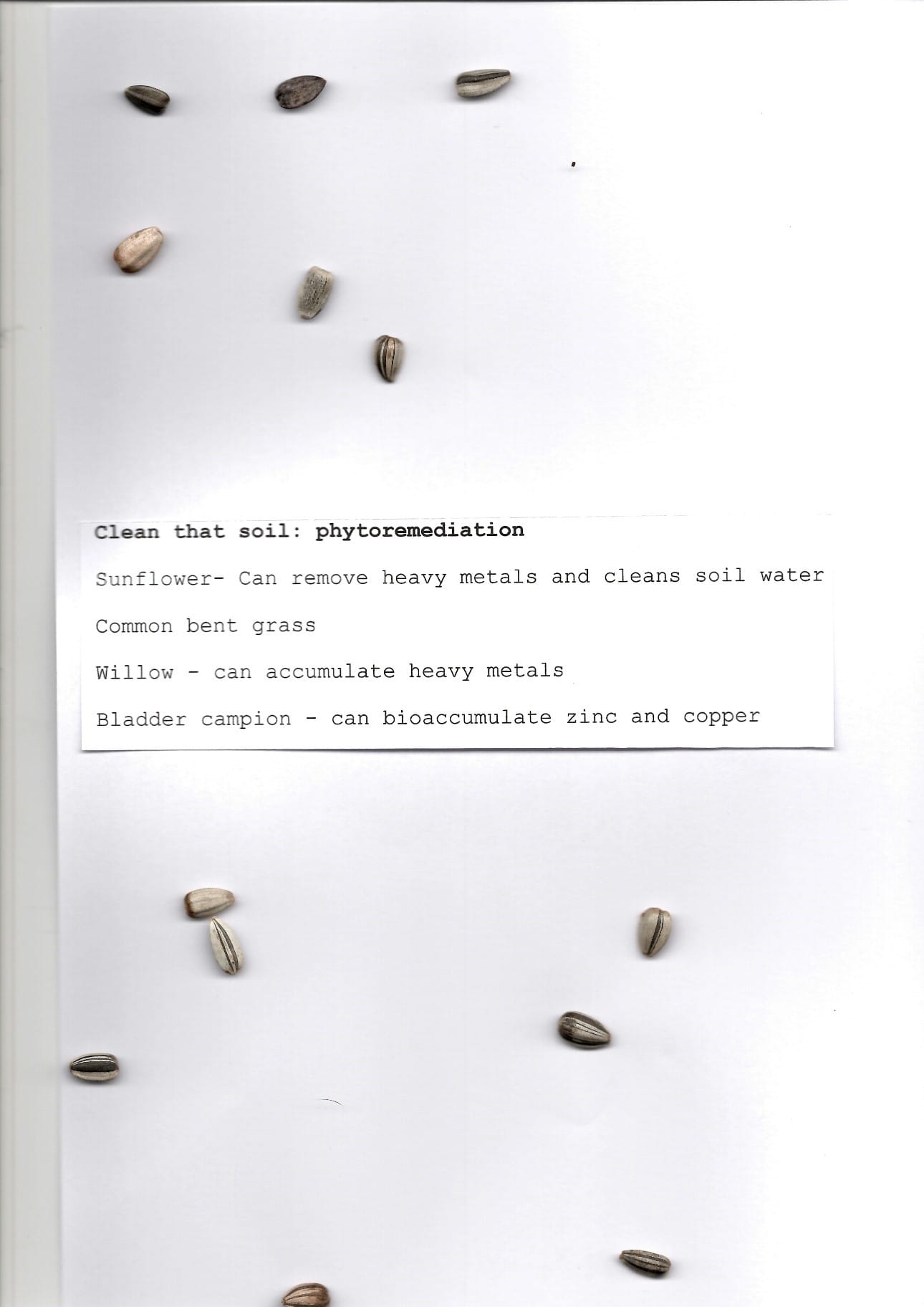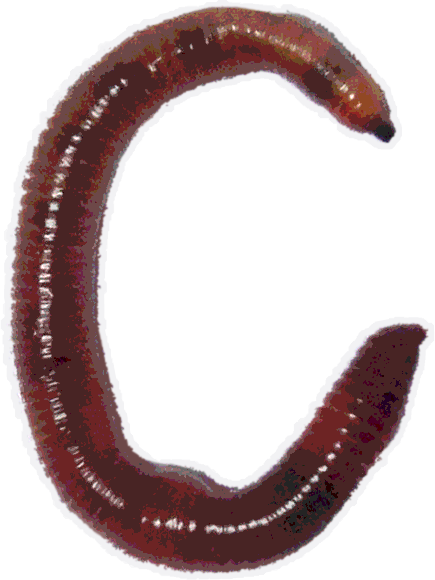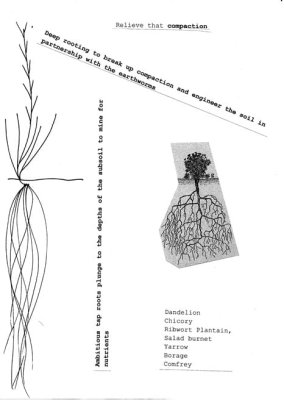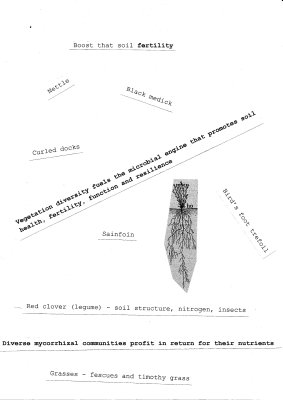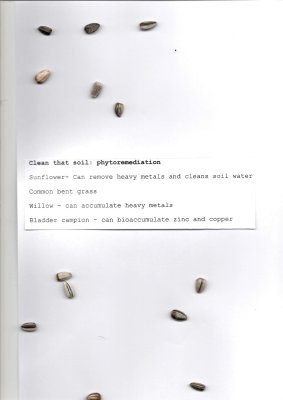Plants interact in a spectacular number of ways with the soil substrate in which they grow. They shouldn’t be thought of as two different components or phases but instead, a complex and tangled network of feedbacks and influences; the soil on the plant and the plant on the soil. Plants can affect the physical, chemical and biological properties and these in turn can affect both the individual plant and the community of plants above ground.
Ultimately this back and forth, pull, squeeze and flow drive more significant change in the whole soil realm, building topsoil, fertility and horizons or layers.The plant community responds and through succession can become more complex (or simple) but often larger, more structured and dominant as it moves towards its climax.

Soils are not inert and like any living organism can react to damage and respond to repair. Sowing diverse plant species with different regenerative properties can help the soil heal with better drainage, movement of air, suppression of disease, space for roots, animals, nutrients and microbes.
Pioneer species are key to reset and repair the soil and facilitate the slow and gradual development of the soil and plant communities. A stable footing for succession to progress. We may think of these as weeds, but they want to grow; to help the soil and to help us.
